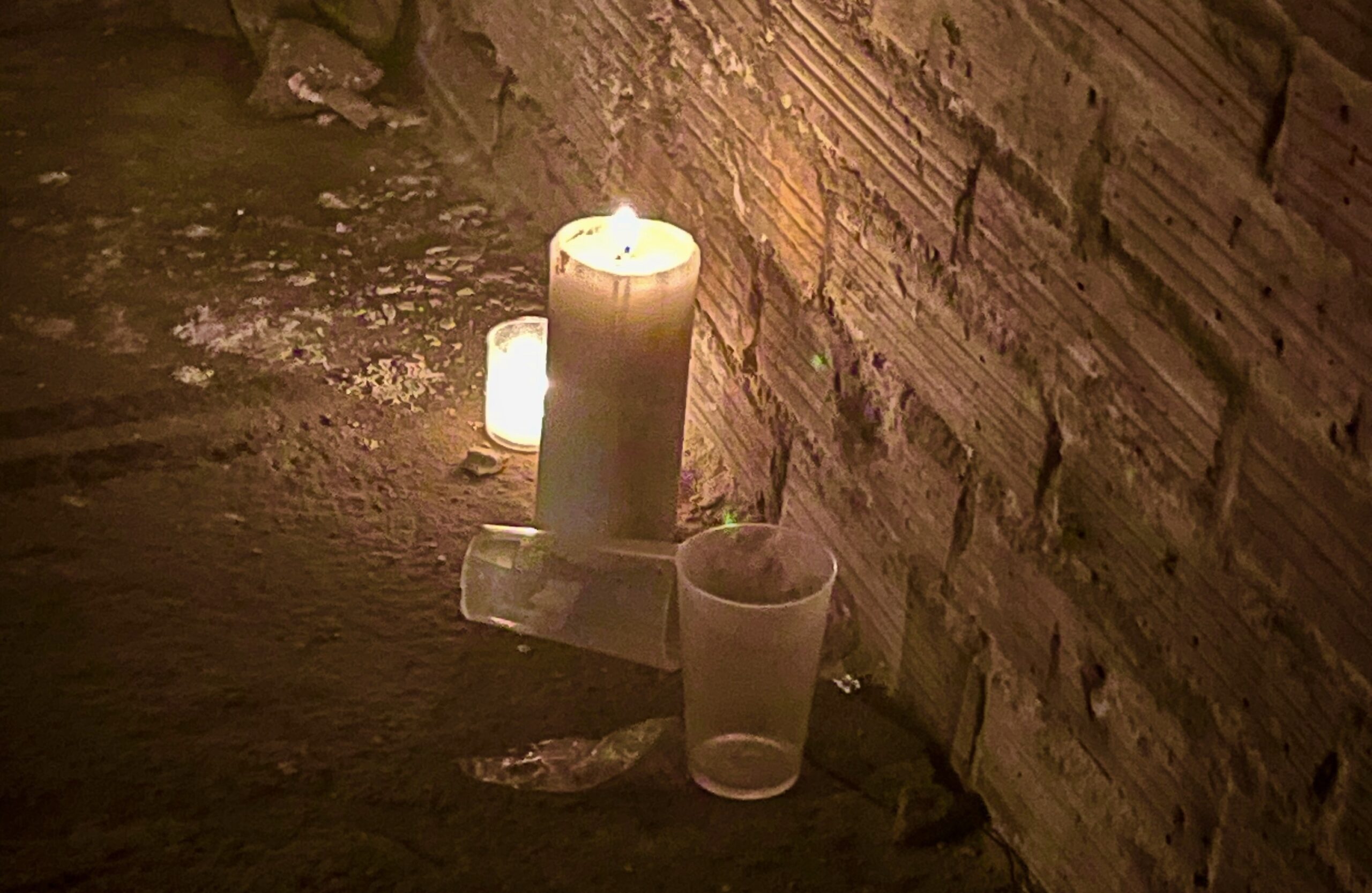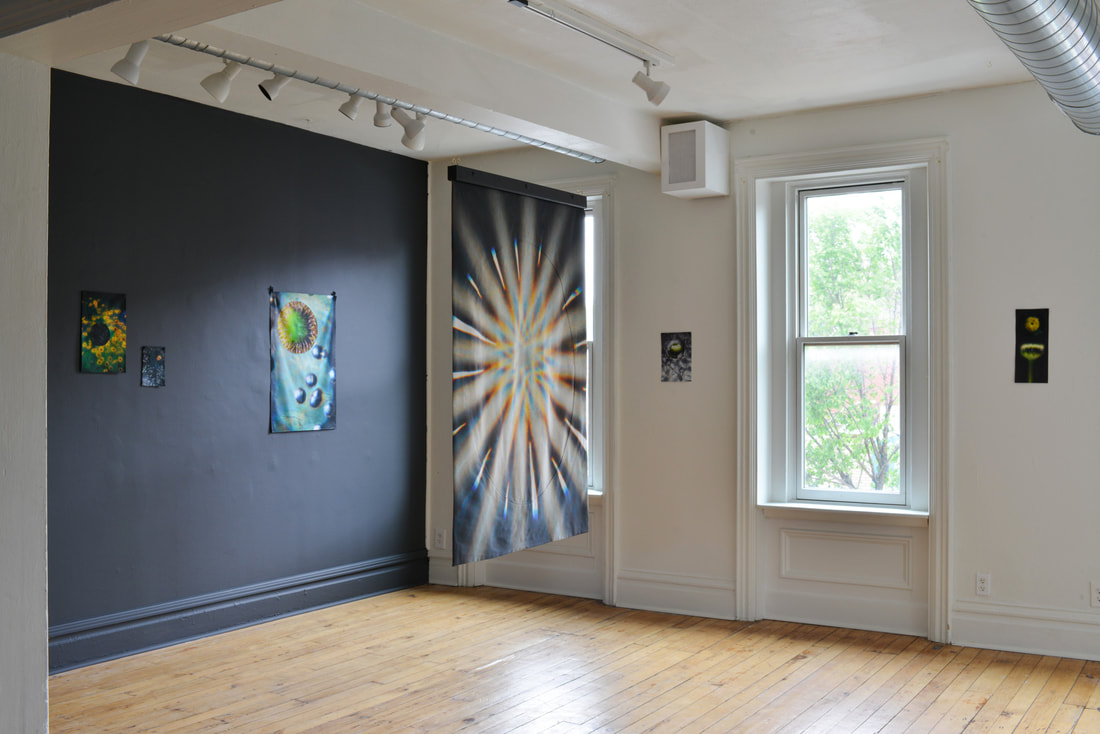
Celestial Echoes
by Kay Gibson
12/13/23
The views and opinions expressed in this article are solely those of the author. They do not reflect the opinions or views of Bunker Projects or its members. All images courtesy of Bunker Projects.
In this addition to the The Hand-Off series, writer and producer Kay Gibson explores techno’s origins in the displacement of Black laborers by technology, its resonances with religious experience, and its potential to reveal essential truths about ourselves. Listen to Gibson’s celestialechos_wav mix made to accompany the essay here:
In 1997, during an interview with producer Juan Atkins, a reporter posed a compelling question: “How do you infuse Soul into machines?” Atkins responded after a thoughtful pause, his lips curling into a slight smile. “You just gotta work ’em, you gotta work ’em like they’ve never been worked!”
When Atkins shared the secret behind the foundations of Detroit techno, it became evident that technology — incessantly in motion, ceaselessly seeking, always hungering for more — is a product and a reflection of our incessant drive to understand humanity itself. Atkins’ answer unveils a profound technological synergy between humans and machines. Within his notion of “work” he emphasizes a level of sensitivity that must be nurtured. To “work” or labor in this context means to adapt oneself to the demands of a technological order. In other words, nothing meaningful can be achieved unless one learns to move in sync with these technological demands, to adapt to them.
It is not an over exaggeration to state that Black workers made up the core of the automotive industry in Detroit. In fact, according to John Schmitt, an economist who studies the issue at the Center for Economic and Policy Research, in the 1970s “one of every 50 African Americans in the U.S. was working in the auto sector. These jobs were the best jobs.” When the availability of these jobs began to wane, people on the assembly line were replaced by robotic limbs. In the wake of this loss, mechanical sounds echoed from factories and migrated into the structure of electronic music. The need these workers faced — to realign, to adapt to the present circumstances — is also a form of labor.
Creating techno music necessitates this adaptation. One cannot help but wonder about the thoughts of these ministers of a technological groove — laying awake at night, listening to the sounds of a future that could overshadow the human: its life and substance replaced by wires and pulses. Could the two coexist harmoniously? What wondrous creations emerged from their endeavor?
The construction and dissemination of this music is only around half a century old. In the span of human history, beeps and buzzes assembled in symphonic union are quite a new introduction to music production and listening. We rely on synthesizers, processors, and mixers to compose music — an unfathomable feat some 60 years ago.
Even further, the machines in question, these human crafted automatons, carry their own interiors. In a studio, there is always noise, a silent reminder of the constant transmission of energy. The decks stacked on decks, mountainous and erect, wires buzzing, the soft hum of static as your constant accompaniment. So many of these instruments present infinite possibilities in how sounds and sequences can be programmed and performed.
The interplay between human and machine, embodied by the studio, extends into the realm of the club as well. The music, the palpable energy, and the tightly-knit sense of community — formed in the face of the daunting challenges of existing in a desire-driven economy — all converge toward a collective aspiration for not just survival but something greater. An enhancement of life. Survival plus. It can be bewildering to fathom the daily constraints imposed on one’s existence. For far too many, mere survival is deemed sufficient. Yet, within the confines of the club or the studio, frenzied sound is alchemically transmuted into nourishment for the soul. It’s almost as if witnessing magic in motion. Almost.
The atmosphere of these intimate spaces, the club and the studio, illustrates the magic of the machine. Empirical understanding doesn’t quite fit in the freeform elements of techno. Logic and reason have stood as necessary components of the human condition; here, these elements take a backseat in place of the strange faith instilled in us by the pulsating beat of the drum.
Through the thrill of production and the undulating energy of the club floor, the body resonates with transmitted energy from the soundsystem. One could argue that human expression is amplified through this experience — rather than a departure from it.
When I immerse myself in this music, I am consistently struck by the memories it evokes, especially those associated with Sunday mornings. Additionally, I keenly observe the physical aspect of techno. From an energetic standpoint, I discern little disparity between a midnight revival and a rave. From this association, I also began exploring the unique spiritual opportunities afforded by machines.
Within the vibrant world of techno music, a profound truth emerges: techno is intrinsically tied to the Black experience. Beyond its history and musicality, techno functions as a spiritual intermediary, a conduit for self-expression, unity, and transcendence. It does not lord over technology, it does not boast; the human is just as integral to the production of techno as is the instruments themselves. It binds with the inevitability of creation. Who knew the mechanical would bring us closer to God? To ourselves?
You see, techno epitomizes the synergy of human effort and machine precision. It has been designed for the industrious spirit.
Techno is a sound that looks to the future, but its origins are firmly rooted in the past, springing from the Black musical impulse of 19th and 20th century America. To understand techno is to trace a line from Willie Mae Thornton to Aretha Franklin, from the Five Blind Boys of Mississippi to the 2 Live Crew. These are the musical ancestors of the Belleville Three (Juan Atkins, Derrick May, Kevin Saunderson). Combined, they’re a legacy, and techno is their contemporary expression.
The narrative of techno unfolds between two emblematic cities: Detroit and Berlin. Throughout the late 80s and 90s, they resonated with each other’s struggles; both bore the scars of decay and dereliction, leading their inhabitants to seek solace and identity outside their familiar boundaries. In passing conversation, many elder Berliners reminisced to me about the city’s pervasive anarchy during this era. The dominance of industry — balanced between unfettered commerce and methodical economic planning — painted parallel portraits for both cities, albeit with nuanced outcomes. The lingering remnants of wartime destruction, both material or otherwise, exposed the city’s deep-seated vulnerabilities.
Berlin’s bisecting Wall carved separate developmental narratives for the Allied and Soviet sections. My scholarly forays into West Berlin’s past revealed a counterintuitive perspective: the West appeared more insular than its Eastern counterpart. West Berlin, encircled by its occupation, morphed into a piecemeal no-man’s land, controlled through the British, American, and French governments, despite its residential population. Interestingly enough, its barricades not only kept East Berliners at bay but also inadvertently inflated construction costs, leaving many structures in ruin and highlighting the inherent limitations of a laissez-faire economy.
Conversely, East Berlin, grappling with housing shortages and limited resources, veered towards pragmatic development. In the years leading to the Wall’s erection, forced collectivization triggered mass migration from the Eastern sector of the city to the West. The stark contrast between East Berlin’s stringent societal and economic conditions versus the piecemeal governance of West Berlin (and its resulting chaotic backdrop) set the stage for ideologically-driven devastation. Occupation left an indelible mark on both halves, slowly stripping the city of its soul. And so, a new one had to be forged.
Meanwhile, on the other side of the Atlantic, Detroit symbolized the pinnacle of industrial prowess. Home to the Big Three — General Motors, Ford, and Chrysler — it rose meteorically to its Motor City moniker, only to witness its prominence wane just as rapidly. By the 1970s, Detroit’s economic vibrancy succumbed to a rapid decline. Once-bustling hubs became eerily silent, replaced by desolate lots and skeletal remnants of its industrious past. These automotive companies, in pursuit of cost efficiencies, relocated operations, favoring robotic precision over the human touch of the predominantly Black employees.
Amid this shift, the rhythmic cadence of mechanical movements, the machine assembly’s hum, and the fading gleam of a chrome era provided the backdrop for a distinctive musical genre.
The historical context, I hope, should point to a deep sense of material and spiritual degradation within the two cities: Berlin, a capital without a country, and Detroit, a casualty of unchecked capitalism. It is because of such destabilization that techno was able to flourish and usher in a sound of the future amidst contentious forces.
Thus, the timely, earthy beats of techno’s sound seeped in unoccupied corners of reunified Berlin, while its popularity in the US was overshadowed by the mainstream genres of the time: hip-hop, pop, rock n’ roll. Despite its lack of traction in the US, this music was exported to foreign countries, desperate to witness a new sonic impulse that hadn’t been heard before.
Techno thrives in the midst of architectural decay, breathing life into forgotten spaces, and providing respite for people, wishing to forget. It has sheltered a disillusioned and exhausted public, and promised a sense of togetherness. It begs the question, why do we gather? What’s remarkable is that this movement, this spiritual journey, has been shaped by two distinct yet ideologically aligned institutions: the Church and the Club. There is a reason why the crown jewel of the techno scene in Berlin, Berghain, is called the “Church of Techno”; stained glass windows generate a sentiment of religious fervor through the thrumming beats of the dance floor.
Techno isn’t confined to beats and melodies; it’s a spiritual experience found in the pulsating rhythms of dance, the creative process of production, and the hovels of forgotten space that is just right for the rave goer.
And why is that? In exploring the concept of the rave, Madison Moore, an artist-scholar, DJ, and Assistant Professor of Modern Culture and Media at Brown University, leads us through the notion of “ALIVENESS.” In response to Christina Sharpe, he describes “ALIVENESS” as a force that transports the listener beyond their immediate reality and into an alternate realm, a feature that has always been endemic to the Black experience. I’ve witnessed individuals so profoundly ensnared by the music, the ceaseless thump echoing in their ears, that they had no choice but to succumb to the overwhelming bass. The sheer volume of sound concentrated in a single space heightens the sensory encounter to a point where one becomes acutely aware of their corporeal existence, rendering the music almost too tangible for the human body to endure. It’s a magnificent and poetic sensation, the ability to dance away the burdens of the world in pursuit of a brighter future.
It is the same sensation that allowed techno to flourish in the voids it encountered. In both Detroit and Berlin, the cities had to confront a question of lack. Of makin’ do. Of survival. Truth be told, as I am writing this, I am desperately seeking ways to fill my cup.
I think I write about techno because it underscored the intriguing progression from the industrial era, when machines transitioned from being barriers for human interaction to becoming conduits for it. My interest lies largely in the fact that techno comes out of one of the major musical centers in America, and yet failed to reach the same mainstream prominence of its sister genres.
Mostly, it’s also out of spite, when people erroneously assume “oontz oontz” music is just for white people.
Maybe through my exploration, what is most surprising is the sheer commercialization that has sustained electronic music and culture, in spite of techno’s origins. Queerphobia, transphobia, and anti-Black rhetoric still separates the authenticity of the scene from a paltry rave that can cost over $500 to attend. As we imagine a freedom-filled future — from hegemony, unchecked consumerism, and human waste and decay — it is more important than ever to keep in mind where we’ve been in order to get where we’re going. The respite that these sounds provide, still to this day, conjures a connectivity that throbs, undulates and pulsates in synchrony with the collective heartbeat.
Kay Gibson is a curator, writer, and DJ, based between Atlanta and Berlin. She is a member of the artist collective Hotbed. You can connect with her @diamantend.co on instagram and @diamantendco on SoundCloud.



